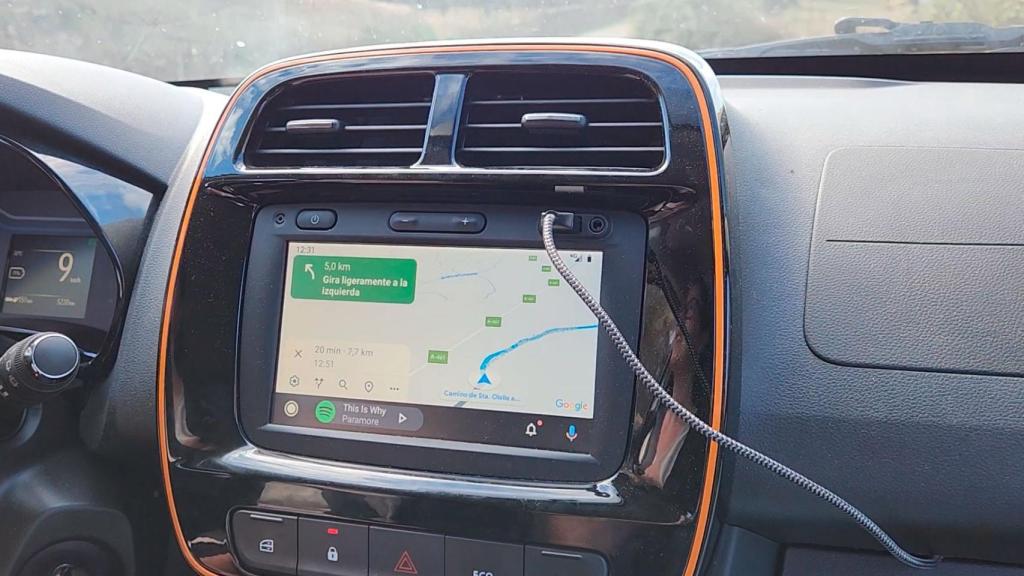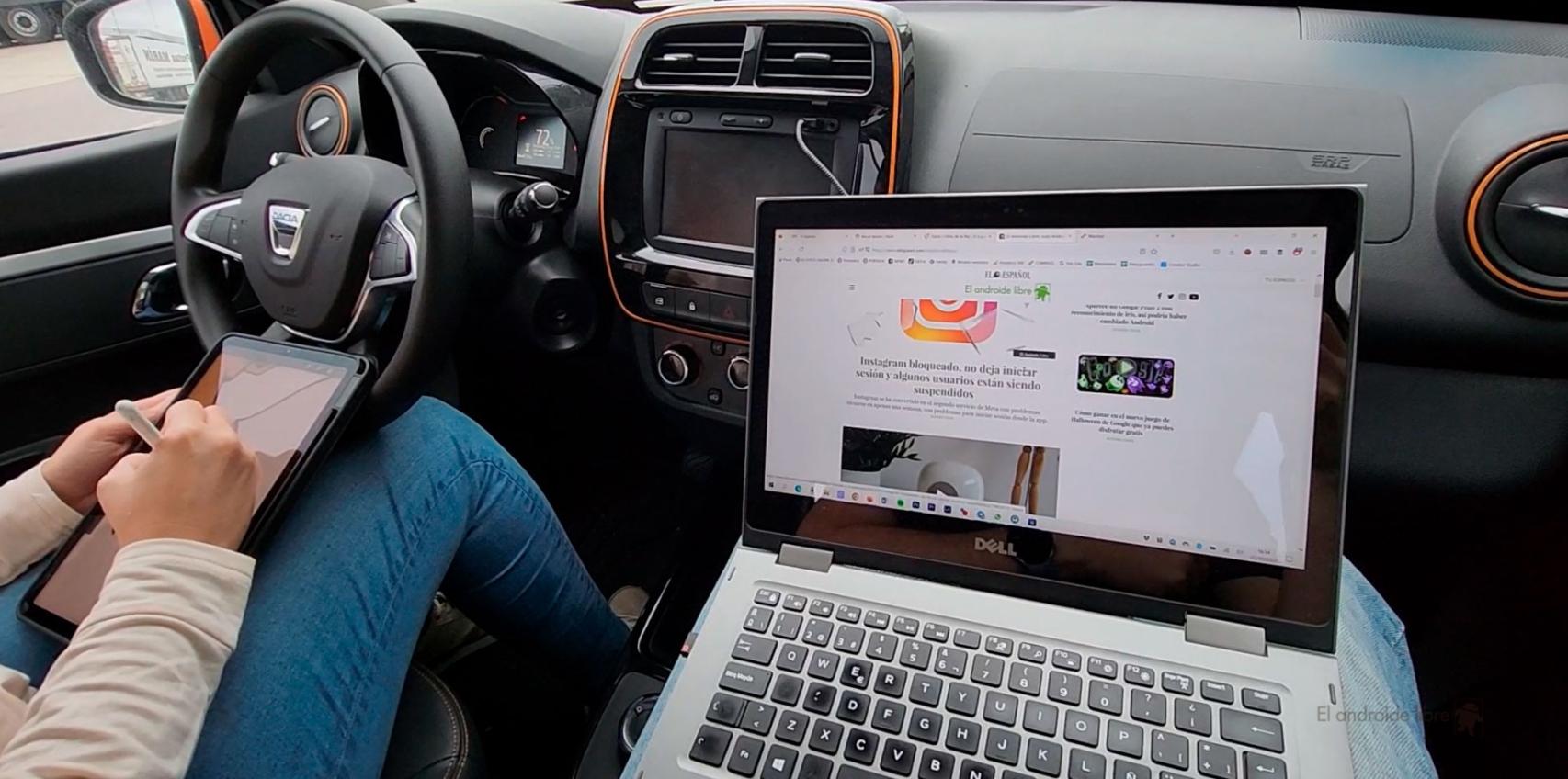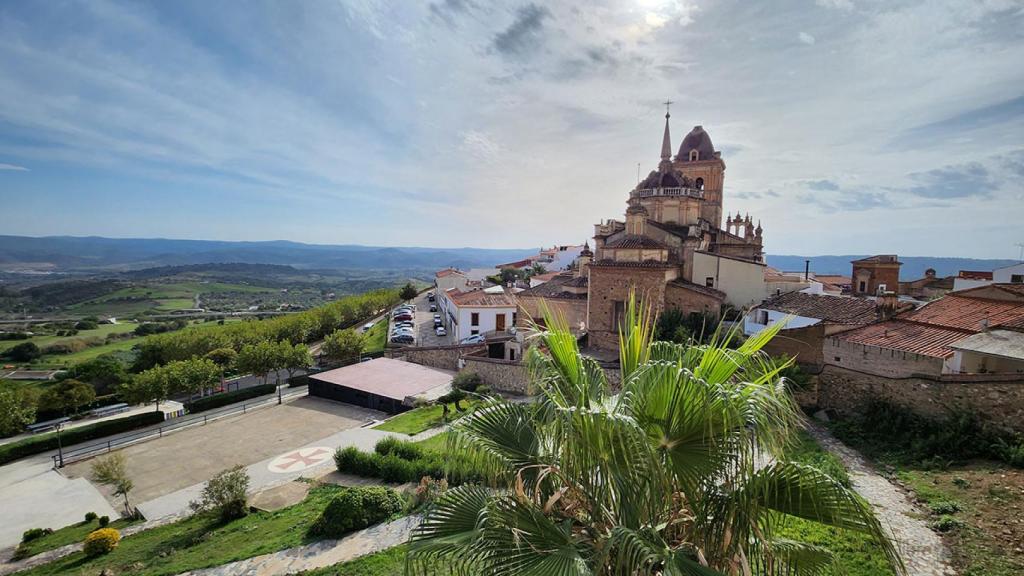When I decided, together with my partner, to buy a Dacia Spring, it was clear to me that the main use would be as a transport vehicle for it to work. They travel about 60 km a day, and for that this car is more than satisfactory.
However, although we have a bigger petrol car, with a range of more than 700 km (very far from the 200 km that the Dacia has in mixed consumption), we have chosen to take an electric car to make a journey of several days in which one would move over short distances, 100 km at most.
It’s just a particular experience, I don’t intend to create a dogma or suggest that all trips are equal, neither for better nor for worse.
trip planning
The first thing you have to keep in mind when driving an electric car, especially with a range like this model, is that no matter how short distances you are going to travel, it is very important to be careful and plan.
It’s not about keeping a diary of everything you do, or not going out of a marked str ategy, but being aware that you have to know where the chargers are, their number and their power, the location in the city where you are going, etc.
In addition, it is important not only the distances that you will cover in the different stages, but also the speed at which you will do it. In our case, we always go at the maximum speed allowed on all roads, except for highways, where this is the case except when the maximum speed is 120 km/h. In this case, the average speed varies between 110 and 120 km/h.
It’s not because we drive an electric car, but because our driving style is like that. In fact, it is the same as when we drive the gasoline car.
It is very important, in order not to have problems, to look at the charging networks that exist in the area where we are going to be. Having the applications installed and configured is very useful. In our case, we used the Iberdrola, Wenea and Endesa apps.
We also decided to take the two cables the car had, although in theory they wouldn’t be the two needed.
improvisation
Despite all this preparation, it must be taken into account that it will sometimes be necessary to improvise, for many reasons.
For example, at one point we had to go cross-country, in an area without chargers for several miles around, so we did it with the battery full to a point that would allow us to go back and forth from the farm where we were going.
This farm had an electrical installation so, if necessary, we could have charged the battery with the slow charging cable, which fills up about 5% per hour.
The trip across the country, along paths where quads and 4×4 cars pass almost exclusively, we did very slowly. Between valleys, slopes and cattle crossings, we couldn’t go very fast.
In this case, the difficulty was not to have an electric motor or not, but to hold the road and the low power of the vehicle. It’s a city car, and dirt slopes are tough terrain. Despite everything, we were able to go there and come back without any problem.
One thing that I don’t think much about, but my partner does, is how much pollution is no longer being emitted. Being in the middle of the field, between cows and sheep, without emanating from the exhaust pipe, is something many people find important.
Other days on the same trip we visited several towns south of Badajoz, with porters in almost all of them. Moreover, since the distance between them was only a few tens of kilometers, we could choose which one to charge.
In other words, we could choose to stop on slow chargers for longer or on fast chargers for less time. Despite what it might sound like, we opted for the former because we could leave the car on charge while we toured the city, without blocking fast charging in case someone needed it.
Of course, on one occasion we reached a charger and the fast charging station was busy, with only the slow charging station (7.2 KWh) free, so we had to wait half an hour using the slow then connect the fast.
The importance of the charger network
When it came to charging the car, we had the two options that many people have: charging it at home or on the public grid.
On this trip we leave from home with the car loaded at home, but the rest of the loads were made at stations of companies such as Endesa or Iberdrola. However, most have been on the Wenea network in Badajoz, which is currently free, although this will change in the future.
This allows you to travel across the province without spending anything.
However, we sometimes had to use fast chargers from Endesa or Iberdrola, with prices around 45 cents per KWh. Given this, the cost per 100 km was around 5.5 dollars, well below the more than 10 dollars it would have cost us with the gasoline car.
When it comes to charging, two things need to be considered.
First, it doesn’t always charge 100%, so times vary. However, it’s still much slower than completing a deposit. Nothing more. At least in a car like this, with 30 KW fast charging.
Also, when you are traveling in a city and want to leave the car on charge, you should be aware that you are parking where the charger is, not where you want to. If walking bothers you a lot, it will be an inconvenience. Although if walking bothers you, maybe you don’t directly do this type of trip.
Conclusion: it’s not the most comfortable, but it can be
The summary of this trip was more than satisfactory.
The positive side is the one that consists of saving money, knowing that you pollute much less, and not having to radically change the way you get around, as would be the case by opting for public transport. .
Of course, it’s more uncomfortable to have to be aware of distances and range in a much more intense way than you worry about with a gasoline car or an electric car with a range of more than 500 km .
But you have to be aware, and I am, that this is not a car designed for long journeys, despite which it more than fulfilled its mission.
This isn’t the first trip I’ve made with this car, and I wanted to test several before giving an opinion on it. Without a doubt, the Dacia Spring is an eminently urban car, but it can be used for short weekend trips as long as you don’t want to cover long distances in one sitting.
You may be interested
Follow the topics that interest you
Table of Contents












